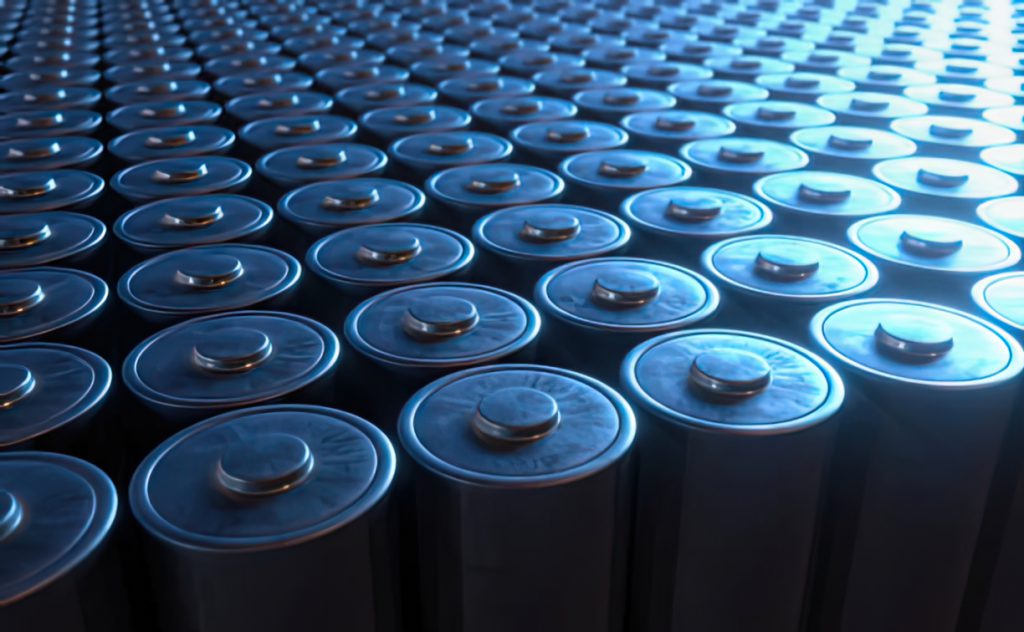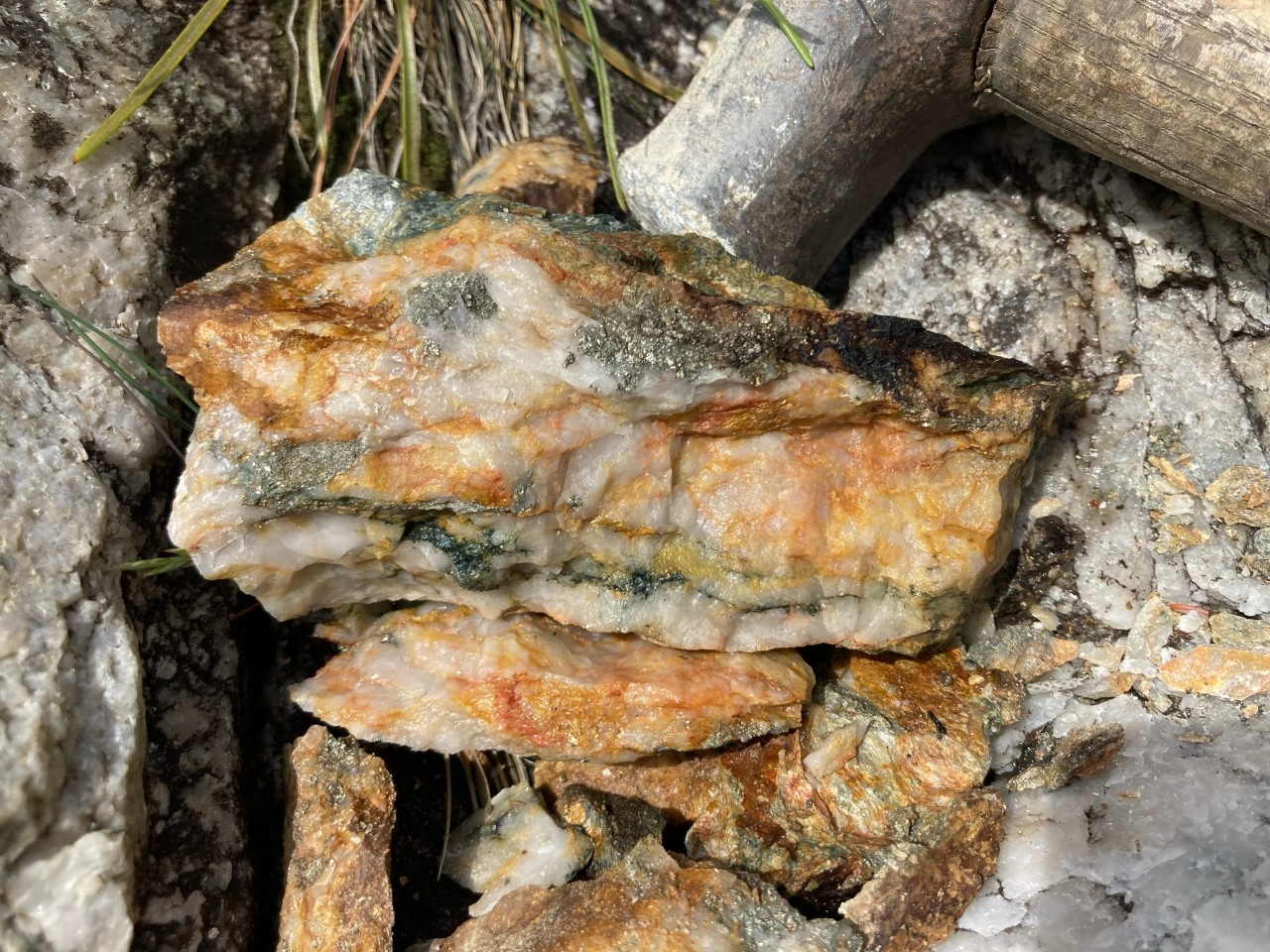An in-depth look at lithium

By Ron Hall
According to the latest report (August 2021) from Roskill, the leading consultancy in critical metals supply chain intelligence, the outlook for the lithium market is dominated by rapid and sustained demand growth, driven by the use of lithium-ion (Li-ion) batteries in automotive and energy storage applications (ESS).
Furthermore, Roskill expect that fundamental changes in operation size and the range of lithium production sources will be needed to meet forecast demand growth and avoid a growing supply deficit and for this to succeed, producers will require adequate lithium compound prices to attract investment and incentivise the develop of lithium resources, a factor which is expected to see lithium prices well supported over the period to 2031.
Lithium does not occur as the metal in nature but is found combined in small amounts in nearly all igneous rocks and in the waters of many mineral springs. Spodumene, petalite, lepidolite, and amblygonite are the more important minerals containing lithium.
The first lithium mineral petalite, LiAlSi4O10, was discovered on the Swedish island of Utö by the Brazilian, Jozé Bonifácio de Andralda e Silva in the 1790s. It was observed to give an intense crimson flame when thrown onto a fire. In 1817, Johan August Arfvedson of Stockholm analysed it and deduced it contained a previously unknown metal, which he called lithium. He realized this was a new alkali metal and a lighter version of sodium.
However, unlike sodium, he was not able to separate it by electrolysis. In 1821 William Brande obtained a tiny amount this way but not enough on which to make measurements. It was not until 1855 that the German chemist Robert Bunsen and the British chemist Augustus Matthiessen obtained it in bulk by the electrolysis of molten lithium chloride.
Lithium is a chemical element with the symbol Li and atomic number 3. It is a soft, silvery-white alkali metal and under standard conditions, it is the lightest metal and the lightest solid element. Its compounds have many uses in the modern world. Lithium oxide is used in special glasses and glass ceramics and lithium chloride is one of the most hygroscopic materials known and is used in air conditioning and industrial drying systems.
Lithium stearate is used as an all-purpose and high-temperature lubricant and lithium hydride is used as a means of storing hydrogen for use as a fuel. The metal is also made into alloys with aluminum and magnesium, improving their strength and making them lighter. For example, a magnesium-lithium alloy is used for armour plating and aluminum-lithium alloys are used in aircraft, bicycle frames and high-speed trains.
Other lithium compounds are used in psychiatric medication primarily to treat bipolar disorder and major depressive disorders that do not improve following the use of antidepressants. It is also used in some non-rechargeable batteries for heart pacemakers, toys and clocks.
But by far its biggest use is in the rechargeable batteries that are used in electronics and electric vehicles. The Li-ion battery uses lithium ions as a key component of its electrochemistry. During a discharge cycle, lithium atoms in the anode are ionized and separated from their electrons. The lithium ions move from the anode and pass through the electrolyte until they reach the cathode, where they recombine with their electrons and electrically neutralize. The lithium ions are small enough to be able to move through a micro-permeable separator between the anode and cathode. In part because of lithium’s small size (third only to hydrogen and helium), Li-ion batteries are capable of having a very high voltage and charge storage per unit mass and unit volume.
Li-ion batteries can use a number of different materials as electrodes. The most common combination is that of lithium cobalt oxide (cathode) and graphite (anode), which is most found in portable electronic devices such as cellphones and laptops. Other cathode materials include lithium manganese oxide (used in hybrid electric and electric automobiles) and lithium iron phosphate. Li-ion batteries typically use ether (a class of organic compounds) as an electrolyte.
Compared to other high-quality rechargeable battery technologies (nickel-cadmium or nickel-metal-hydride), Li-ion batteries have several advantages. They have one of the highest energy densities of any battery technology today (100-265 Wh/kg or 250-670 Wh/L). In addition, Li-ion battery cells can deliver up to 3.6 Volts, 3 times higher than technologies such as Ni-Cd or Ni-MH.
This means that they can deliver large amounts of current for high-power applications. They are also comparatively low maintenance, and do not require scheduled cycling to maintain their battery life. Li-ion batteries have no memory effect, a detrimental process where repeated partial discharge/charge cycles can cause a battery to ‘remember’ a lower capacity. This is an advantage over both Ni-Cd and Ni-MH, which display this effect. Li-ion batteries also have low self-discharge rate of around 1.5-2% per month. They also do not contain toxic cadmium, which makes them easier to dispose of than Ni-Cd batteries.
Due to these advantages, Li-ion batteries have displaced Ni-Cd batteries as the market leader in portable electronic devices such as smartphones and laptops. Li-ion batteries are also used to power electrical systems for some aerospace applications, notable in the new and more environmentally friendly Boeing 787, where weight is a significant cost factor.
Despite their technological promise though, Li-ion batteries still have several shortcomings, particularly with regards to safety. Li-ion batteries tend to overheat and can be damaged at high voltages. In some cases, this can lead to thermal runaway and combustion. This has caused significant problems, notably the grounding of the Boeing 787 fleet after onboard battery fires were reported. Because of the risks associated with these batteries, several shipping companies refuse to perform bulk shipments of batteries by plane. Li-ion batteries require safety mechanisms to limit voltage and internal pressures, which can increase weight and limit performance in some cases. Li-ion batteries are also subject to aging, meaning that they can lose capacity and frequently fail after a number of years.
Another factor limiting their widespread adoption is their cost, which is around 40% higher than Ni-Cd. Addressing these issues is a key component for current research into the technology. Finally, despite the high energy density of Li-ion compared to other kinds of batteries, they are still around a hundred times less energy dense than gasoline (which contains 12,700 Wh/kg by mass or 8760 Wh/L by volume).
Nonetheless, the lithium mining sector has seen a proliferation of activity in the last 10 years largely driven by the EV industry:
Jiangxi Ganfeng Lithium Co. Ltd., based in China, is the largest lithium metal producer in the world, while its lithium compound capacity ranks third worldwide and first in China. The firm holds lithium resources across Australia, Argentina, and Mexico and has over 4,844 employees. It reported a revenue of 2020 $839.26 million in 2020, almost double the $432.11 million it reported in 2016. Tianqi Lithium, also headquartered in China, is the world’s largest hard-rock lithium producer and holds resource and production assets across Australia, Chile, and China. The company has over 1,800 employees globally and in 2018 controlled more than 46% of the global production of lithium. In its 2021 Q1 report, it announced total revenues of $140 million.
In the USA, Albemarle Corp. [ALB-NYSE], based in Charlotte, North Carolina and founded in 1994, has grown to establish itself as the second-largest lithium miner in the world, with revenues of $3.128 billion in 2020. With over 5,000 employees in 100 countries worldwide, Albemarle, as of 2020, was the largest provider of lithium for electric vehicle batteries.
Sociedad QuÃmica y Minera (SQM) is a Chilean chemical company whose main production facilities are located in the Atacama Desert. In 2020, SQM produced 72.2 thousand tonnes of lithium carbonate at their Salar de Atacama mine. By comparison, in 2011 it mined only 38 thousand tonnes.

In Canada, Sokoman Minerals Corp. [SIC-TSXV, SICNF-OTCQB] and Benton Resources Inc. [BEX-TSXV] recently formed an alliance in a bid to share the cost of acquiring and exploring gold opportunities (on a 50-50 basis) in Newfoundland.
The aim is to show there is a lot more gold to be found beyond recent discoveries by Sokomon, Marathon Gold Corp. [MOZ-TSX, OTC-MGDPF], New Found Gold Corp. [NFG-TSXV], and others.
However, the alliance made headlines back in August, 2021, when it announced what is believed to be the first discovery of significant lithium mineralization on the island of Newfoundland.
During a recent trip to the Golden Hope property, one of three gold projects in the alliance’s portfolio, senior executives from both companies identified a swarm of spodumene-bearing pegmatite dykes.
In an October 14, 2021 press release, the companies said prospecting has expanded the area containing lithium-bearing pegmatite dykes, now known as The Kraken Pegmatite Swarm, to an area measuring approximately 2.2 kilometres long by 0.85 kilometres wide. Assays from rock samples have shown that the dyke system contains economic grades of lithium (up to 2.37% Li2O), is widespread and open along strike.
Benton President and CEO, Stephen Stares, said it is quickly becoming evident that the Kraken dyke system is a large, highly-evolved, pegmatite field. Stares said he is seeing similarities to the geological environment and setting of other large systems in the Appalachian belt, including important deposits held by Piedmont Lithium Inc. in eastern U.S. and Genfeng Lithium’s Avalonia project in Ireland.
Exploration crews are working to establish targets for a drill program on the Kracken Pegmatite Swarm. A drone survey is also being planned to provide a structural/lithological setting and help identify gold-bearing structure extensions, as well as any unrecognized structures including those potentially related to lithium-bearing pegmatites.
“Lithium is the green metal of the future with the electric vehicle buzz,” said Sokoman President and CEO Timothy Froude. “Now is the time to get into lithium.”

However, in the interview, Froude was quick to stress that gold is the primary focus on all of the properties in the alliance portfolio, including Golden Hope, Grey River and Kepenkeck.
Golden Hope is a property that was acquired by staking. It is a large, district-scale project consisting of 3,146 claims (78,650 hectares) and is accessible by the Burgeo Highway and transected by a major power transmission line.
The property covers extensions of two major structures linked to significant gold prospects and deposits in southern Newfoundland. The rock units and structures on the property are likewise related to those associated with new low-sulphidation gold discoveries in central Newfoundland, including Sokoman’s Moosehead Project and New Found Gold’s Queensway Project.
Sokoman says Golden Hope is extremely underexplored, despite known occurrences of gold, and the presence of unsourced till, soil and stream sediment geochemical anomalies.
Meanwhile, news that the Grey River gold project on Newfoundland south coast has been advanced to the inaugural drilling stage, sparked active trading in both Sokoman and Benton (October 13, 2013).
Exploration crews are targeting high-grade gold mineralization similar in style to the Pogo gold deposit in the Tintina Belt of Alaska. The Pogo mine has produced 3.9 million ounces of gold at 13.6 g/t gold (to the end of 2019) with mineral reserves of more than 7 million ounces of gold.
Exploration at Grey River will focus on areas of anomalous gold with six to ten reconnaissance holes using data from a recently completed, high resolution, magnetic/electromagnetic airborne survey that identified potential structures correlating with the gold enriched areas.

Historical sampling results include chip/channel samples of 225 g/t gold, and widespread grab sample values of less than detection to 3.8 g/t gold. None of the gold enriched areas, which occur over an 8.0-kilometre length of the silica body, have been drill-tested.
The project is centred on the community of Grey River, a deep-water, ice-free harbour on the south coast of Newfoundland, about 38 kilometres southeast of the Golden Hope joint venture.
Like Golden Hope, the alliance’s Kepenkeck Gold property lies along trend from Canstar Resources Inc.’s [ROX-TSXV, CSRNF-OTCPK] Golden Baie property.
Kepenkeck covers 595 claims over 15,625 hectares located near the northeast extension of the Hermitage Flexure, the predominant geological feature of the south Newfoundland Appalachians.
Recent prospecting identified up to 5.34 g/t gold in grab samples. Visible gold has been panned from till in two locations on the property where the target is high grade and quartz veining, hosted in graphitic shales similar to that of New Found Gold Corp’s Queensway property.
It is worth noting that Benton and Sokoman were already established players in Newfoundland before the strategic alliance was announced in May, 2021.
Sokoman’s key asset is its 100%-owned high-grade, low-sulfidation-style Moosehead Gold Project. It is located along the Trans-Canada Highway in North-Central Newfoundland and on the same structural trend as Marathon Gold’s Valentine Gold Project and New Found Gold’s Queensway Project.
 Sokoman emerged on investor radar screens in July, 2018, when discovery hole MH-18-01 returned 11.90 metres of 44.96 g/t gold from 109 metres down hole. The company is now one of the largest land holders in Newfoundland with direct ownership or co-ownership of over 150,000 hectares. The company said it is sufficiently funded to advance its portfolio of properties, which includes the Fleur de Lys Project in northwest Newfoundland.
Sokoman emerged on investor radar screens in July, 2018, when discovery hole MH-18-01 returned 11.90 metres of 44.96 g/t gold from 109 metres down hole. The company is now one of the largest land holders in Newfoundland with direct ownership or co-ownership of over 150,000 hectares. The company said it is sufficiently funded to advance its portfolio of properties, which includes the Fleur de Lys Project in northwest Newfoundland.
Froude said Sokoman plans to spend $5 million between now and the end of 2021, including $3.5 million at Moosehead, where the emphasis is on barge-based drilling, and $1.5 million on the alliance properties.
Benton Resources is a multi-commodity project generator with a high-quality portfolio and partners. Its aggressive and experienced management team is focused on base and precious group metal exploration.
Benton’s portfolio includes the Far Lake copper-silver project in northwestern Ontario, a new high-grade copper discovery that the junior has optioned from White Metal Resources [WHM-TSXV], with exploration and drilling continuing throughout 2021.
Trench samples have returned assays of 22% copper from Far Lake, which Benton said shows characteristics similar to that of other large world-class porphyry and IOCG deposits.
In June, 2021, Benton completed a $2.25 million financing that was led by Bay Street financier Eric Sprott. Whenever possible, Benton retains net smelter return royalties for potential long-term cash flow.
Meanwhile, on October 13, 2021, Sokoman was trading at 39.5 cents, in a 52-week range of 78 cents and 14.5 cents, leaving the company with a market cap of $76.2 million, based on 200 million shares outstanding.
Benton was trading at 20 cents in a 52-week range of 25 cents and 13.5 cents, leaving the company with a market cap of $23 million based on 115.6 million shares outstanding.
